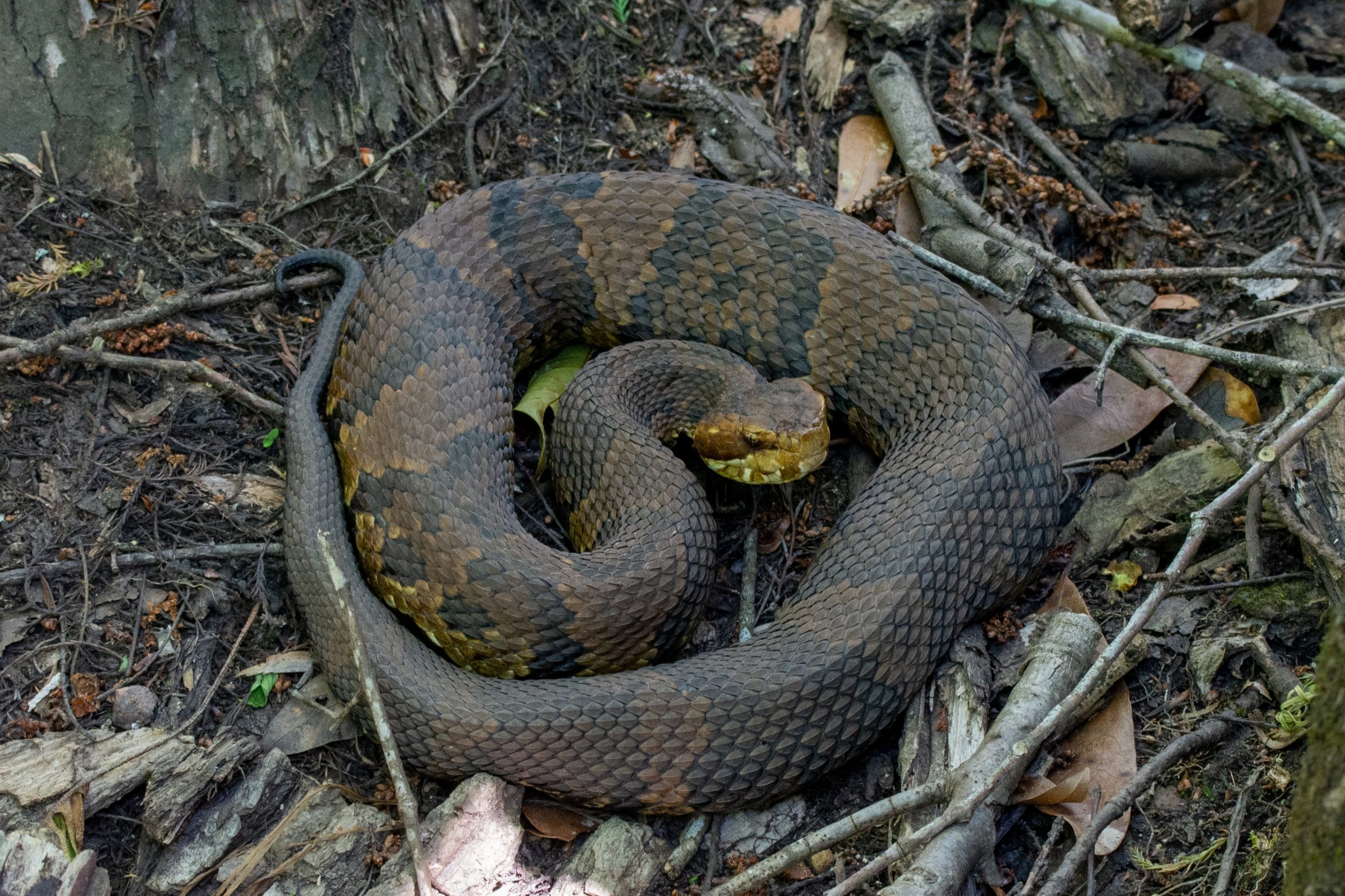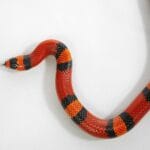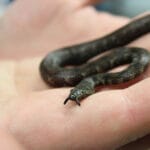Hey there, snake enthusiasts! Today, we’re diving deep into the world of Northern Cottonmouths. Prepare to be amazed as we uncover fascinating facts about their habitat, behavior, and how we can peacefully share their space. Get ready to ditch the fear and embrace the wonder of these often-misunderstood creatures!
Unveiling the Northern Cottonmouth
Northern Cottonmouths – a name that often evokes fear. While their venomous nature is a reality, these snakes are often misunderstood. Let’s separate fact from fiction and discover how crucial they are to our ecosystem and how we can coexist peacefully.
Prime Real Estate: Where Cottonmouths Hang Out
Imagine swamps, marshes, and those languid rivers perfect for a lazy afternoon of fishing – these are prime Cottonmouth neighborhoods. Expert swimmers, they thrive in these watery environments. While you might spot them during the day, they’re more likely to become “night owls” in the scorching summer months, emerging when it’s cooler.
A Cottonmouth’s Menu: What’s for Dinner?
Fish, frogs, and the occasional small mammal – that’s what’s on the menu for a Cottonmouth. These ambush predators lie in wait, utilizing heat-sensing pits on their faces to detect their next meal. Like built-in night vision goggles, these pits allow them to sense the body heat of their prey.
Identification is Key: Telling Cottonmouths Apart
Distinguishing a Cottonmouth from harmless water snakes is crucial for both your safety and theirs. Here’s what sets them apart:
| Feature | Northern Cottonmouth | Harmless Water Snakes |
|---|---|---|
| Body | Stout, thick | Slender, streamlined |
| Head | Triangular, wider than the neck | Usually oval, less distinct from the neck |
| Heat-Sensing Pits | Present between eyes and nostrils | Absent |
| Mouth Lining | White (often visible when threatened) | Not white |
That striking white mouth lining is the source of their name. It’s a warning signal, a reptilian “stop sign,” telling potential threats to back off.
Venom and Safety Precautions
Cottonmouth venom is potent, designed to subdue prey. In humans, it can cause serious damage, leading to pain, swelling, and blood clotting issues. The most important takeaway? If bitten, seek medical attention immediately.
Peaceful Coexistence: Sharing the Space
Here’s the good news: Cottonmouths aren’t out to get us. They’d much rather avoid confrontation. Most bites occur when they feel threatened or are accidentally stepped on.
Here’s how we can peacefully coexist:
- Give them distance: Admire them from afar; close-ups aren’t necessary!
- Respect their home: Avoid disturbing their habitats; let them live their lives.
- Spread the word: Educate others about these snakes – knowledge is power!
Family Matters: Live Birth and Independence
Unlike some snakes that lay eggs, Cottonmouths give birth to live young – talk about entering the world ready to go! A litter can have 4 to 12 little ones, and these babies are independent from day one.
Staying Safe in Cottonmouth Territory
Venturing into areas where Cottonmouths live? A little precaution goes a long way:
- Be aware: Pay attention to your surroundings, especially near water.
- Keep your distance: No need to test their personal space.
- Protective footwear: Sturdy boots or shoes are a must – leave the flip-flops at home.
Conservation: Protecting a Vital Species
For now, Cottonmouth populations are relatively stable. However, habitat loss and fear-driven killing pose ongoing threats. Protecting their watery homes and promoting understanding are key to ensuring these fascinating creatures remain for generations to come.
More Than Meets the Eye: Appreciating the Cottonmouth
Northern Cottonmouths play a crucial role in our ecosystem, keeping prey populations in check. By learning about their behavior, respecting their boundaries, and appreciating their place in the web of life, we can coexist peacefully with these often-misunderstood creatures.
How Aggressive is a Cottonmouth?
We’ve all heard the tales of aggressive Cottonmouths, ready to chase you down. But let’s unravel that myth. While they possess a venomous bite, labeling them as inherently aggressive isn’t entirely accurate. They’d much rather slither away given the chance.
Those intimidating displays – the gaping mouth, the vibrating tail? That’s their way of saying, “Hey, back off! I feel threatened.” It’s a warning system, not necessarily an attack signal.
This underscores the importance of knowing how to identify a Cottonmouth from its non-venomous water snake counterparts. Mistaken identity can lead to unwanted trouble for both parties. The more we understand, the better equipped we are to appreciate them from a safe distance.
Respecting their space is vital. Awareness of their preferred habitats and behaviors can prevent negative encounters. After all, Cottonmouths play a crucial role in our ecosystems, helping keep rodent populations in check. They’re a vital part of the natural balance, even if their reputation sometimes precedes them.
There’s still much to learn about Cottonmouth behavior. Ongoing research continues to refine our understanding. Some experts suggest their defensive strategies may be more complex than we realize, influenced by individual temperament and environmental conditions. This ongoing exploration reminds us that the natural world is full of nuance, and separating fact from folklore is a journey, not a destination.
What is the Difference Between Florida and Northern Cottonmouths?
What was once thought to be one species of Cottonmouth is now recognized as two: the Florida Cottonmouth and the Northern Cottonmouth. Let’s explore their differences.
First, appearance. The Florida Cottonmouth flaunts a more vibrant pattern on its scales, with dark bands outlined in lighter colors, some even sporting an orange-brown stripe on their head. The Northern Cottonmouth prefers a more subdued style with a darker, more muted pattern and less defined bands.
Venom is another point of distinction. The Northern Cottonmouth’s venom is considered less potent than its Florida cousin. While you don’t want to mess with either, a bite from a Florida Cottonmouth might require additional medical attention.
Finally, their range. The Northern Cottonmouth has a wider range, inhabiting swamps, marshes, and slow-moving rivers from the southeastern US to the central part of the country. The Florida Cottonmouth, as its name suggests, primarily sticks to Florida and the Florida Keys.
Remember, these differences don’t warrant close encounters to try and differentiate them. Both are venomous snakes best admired from a distance. Respecting their space is the key to peaceful coexistence.
Why do they call it Cottonmouth?
The Cottonmouth has a unique way of telling you to back off. Their name comes from the startling white inside of their mouths, which they flash when threatened – a clear “Don’t mess with me” signal. If that doesn’t deter you, they might hiss, rattle their tails, or even strike. Their venomous bite serves as a serious reminder not to underestimate them.
These snakes prefer to hang out in wetlands, marshes, and slow-moving rivers – basically, anywhere with plenty of water and cover. You’ll most likely find them lurking near the water’s edge, waiting to ambush prey like fish, frogs, and small mammals.
Here’s where things get tricky. Many people mistake harmless water snakes for Cottonmouths, and it’s easy to see why. They share similar habitats. However, some key differences exist.
Cottonmouths have a more stout, muscular build compared to slender water snakes. Their heads are triangular, similar to a pit viper, and their pupils are elliptical, like a cat’s eyes. Behavior is also telling. While water snakes are more likely to slither away when approached, Cottonmouths are more likely to stand their ground.
Remember, Cottonmouths would rather avoid confrontation. However, if cornered or threatened, they won’t hesitate to defend themselves. Understanding their behavior and giving them space is crucial.
Here are a few more fascinating facts about these misunderstood creatures:
- Cottonmouths give birth to live young, unlike many other snake species that lay eggs.
- They can strike at speeds up to 6.9 mph – lightning fast in the reptile world.
- Even with their venomous bite, Cottonmouths are not inherently aggressive.
Knowing how to identify a Cottonmouth and respecting its boundaries is key to peaceful coexistence. And, should you ever find yourself on the receiving end of a bite, seek immediate medical attention. Better safe than sorry!
If you’re curious about other fascinating creatures in their habitat, check out the differences between nutria vs capybara. We also have a stunning collection of muskrat pictures for you to explore.
- SYBAU See You Baby Meaning: Gen Z Slang Evolves - July 1, 2025
- Unlock Your Inner Youth: Lifestyle Secrets for a Vibrant Life - July 1, 2025
- Decode SYBAU Meaning: Gen Z Slang Explained - July 1, 2025







2 thoughts on “Unraveling the Mystery: Northern Cottonmouths, Their Habitat, and How to Coexist”
Comments are closed.